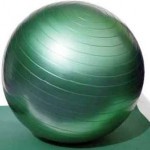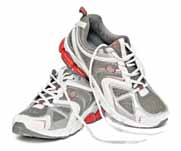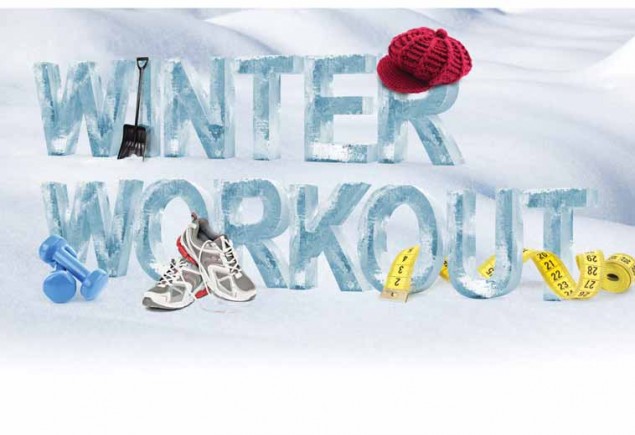Winter Workout
Q: As a frum woman, I find it challenging to exercise year-round, but especially in the winter. What are some good ways to stay active when it’s cold outside?
A: I’m sure you lead a hectic life with little time to spend on yourself, especially if you’re a mother or a member of the “sandwich” generation. Every minute of your day may seem like it’s already accounted for; who has time for exercise?
No Sweat
Winter doesn’t need to preclude outdoor exercise. Skiing, sledding, snowball-fighting—these calorie-burning activities lend more excitement to winter. Even a simple walk in the snow burns more calories than walking on a spring day. You just need to make sure you’re wearing the right clothing. “You don’t want the sweat to stay on your body,” warns Miriam Brickner, a frum personal trainer at New York Sports Club in New York City. “This is true whenever you work out, but especially in colder temperatures. You need a fabric that will ‘wick’ away moisture and keep you warm.” (Sweat-wicking refers to a type of material used for athletic gear that draws moisture away from the skin through the clothing’s surface, keeping athletes dry and warm when working out.) “They even make special gloves for running that don’t absorb sweat so they keep your hands warm.” You can still wear regular cotton clothing to work out, as long as you wear a wicking layer underneath. “Layers are great when you’re working out outdoors because you can easily remove or add on as needed to keep your body comfortable.”
Getting regular physical activity becomes more of a challenge once the weather turns cold. The challenge is not limited to women, of course. In fact, a study in the American Journal of Epidemiology showed that both genders are less active in the winter than in the summer (men are nearly a full hour less active per day when it’s cold out, while women are sixteen minutes less active).
But regular physical activity needs to be a priority, says Brickner. While exercise is crucial year-round for burning calories, building muscle and strengthening bones, it may provide particular benefits during the winter. For those of us in the Northern hemisphere, it can work off some of the unwanted pounds left over after the fried donut-and-latke season. Plus, moderate exercise has been shown to boost immunity, which we need during the cold winter months. Spending more time indoors may increase our exposure to germs.
Brickner feels that a demanding lifestyle is no reason to remain inactive. “I know many frum people who work out—mothers and fathers alike. If they want to make the time, they will. If they don’t want to make the time, they’ll always find an excuse.” One of Brickner’s private clients is a rebbetzin in Brooklyn with a plethora of responsibilities. (“She’s always answering the phone while we’re working out, talking in Yiddish.”)
Below are some of Brickner’s suggestions for staying active the winter.
 Hit the gym.
Hit the gym.
Everything you need is there under one roof. Gyms provide a range of activities to suit people with all types of interests, from dance classes and spinning for those who find traditional exercise equipment too boring to Pilates and yoga for people who want to improve flexibility and tone. What you do at the gym will depend on what you are trying to accomplish. For example, during the winter Brickner sees marathon runners on treadmills and participating in cross training classes to stay competitive when they can’t run outside.
Women-only gyms, popular throughout the US, resolve some of the tzeniut issues.
Many gyms also offer childcare—a key advantage for parents—some as a benefit of membership, others for a small additional fee. While you’ll have to work around their schedule, most gyms typically offer several after-work hours for working parents.
Try it at home.
You don’t need to shell out large sums in membership fees to take classes by trained professionals. If you want to try Zumba or Pilates, you can find videos online. Brickner recommends surfing YouTube for free workout video clips. You can pick up basic, inexpensive equipment like dumbbells or a resistance band that won’t take up a lot of storage space and learn how to use them properly with a video. Just remember to stretch, especially post-workout. It will make you less sore and will help you in the long run with your flexibility and recovery.
 Walk it off.
Walk it off.
If you typically walk for exercise, you can continue doing so even when the temperature drops. Malls are ideal venues for walking because they are temperature controlled with long, wide hallways. Walk on weekdays or early mornings to avoid crowds. If you’re a member at a local museum, try walking there for an interesting change of scenery, although you may need to slow your pace. You can also brave the great outdoors as long as you’re properly dressed and walking in a well-lit, safe area.
Hire a trainer.
A personal trainer can come to your house where you set the time and conditions. Getting two or three neighbors or friends together to do a yoga class in your living room can be an affordable option.
Having a support system to help take care of young children and cover other responsibilities to allow time for exercise is crucial. But don’t discount the activities that keep you busy with your kids. Going to the beach or the park and running around with your kids—that’s exercise. As long as you’re moving, you’re building muscle, burning calories and getting in shape.
 Slip in small workouts.
Slip in small workouts.
Try to “work out” throughout the day, as you go about your normal activities. For example, practice squats as you bend to put groceries in the fridge and do shoulder presses when you put away canned goods. Hold in your stomach and work on strengthening your core and improving balance as you wait for a bus or on line in a store. If you live in a large apartment building, run up and down the stairs for exercise. Kids interrupting your routine? Incorporate them into your workout by using them as “station managers”; they can count your jumping jacks, for example.
Snowed In
This winter, you may need to clear away piles of snow to clear the sidewalk or get your car out. Shoveling snow can be great exercise. For a 150-pound adult, twenty minutes will burn about 140 calories. But you can also injure yourself if done improperly. Brickner offers her instructions for safe shoveling:
• Bend and lift the snow from your knees, pulling your belly in toward your spine. This keeps your abdominal muscles engaged, protecting your back and also strengthening your core.
• Roll your shoulders back and keep your “lats” down (the largest muscle in your back, latissimus dorsi).
• Stretch afterward. Here are several stretches to try:
![]() 1. With your feet wide, bend over from the hips, keeping your back flat and trying to touch the floor; this stretches your hamstrings.
1. With your feet wide, bend over from the hips, keeping your back flat and trying to touch the floor; this stretches your hamstrings.
![]() 2. Stand straight with hands on hips toward your back; then push your hips forward so you’re extending your back trying to reach your head toward back of the room.
2. Stand straight with hands on hips toward your back; then push your hips forward so you’re extending your back trying to reach your head toward back of the room.
3. Sit in a chair, cross your ankle over your knee and lean forward to stretch out your hips.
Stretching should feel good. Some discomfort is normal, but you should not feel pain. If you do, stop immediately. Also, if you’re not active, shoveling snow may be too much for your fitness level. Talk with your physician, especially if you have a cardiovascular condition.
Shira Isenberg is a registered dietitian and writer. She has a master’s degree in public health nutrition from Hunter College in New York.

